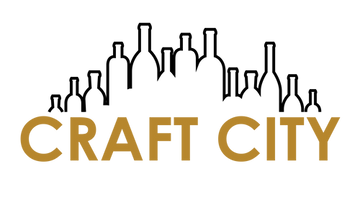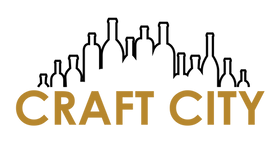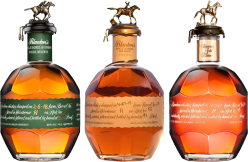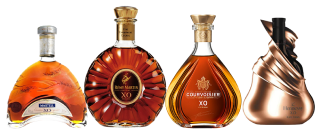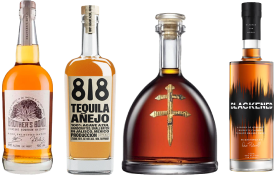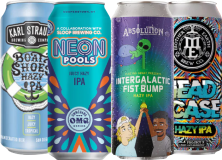Wild Horse Chardonnay
Located in historic Templeton, Wild Horse Winery was named for the wild mustangs that roamed the hills east of our vineyard estate. Their free and noble spirit are a nod to Wild Horse Winery's commitment to spirited winemaking.The Templeton vineyard and winery location was chosen in 1981 for its low vigor soils, proven ground water table, proximity to Estero Bay and rustic vibe. Situated at a midpoint in the Central Coast, this location is ideal for sourcing fruit from vineyards north and south of the winery. Wild Horse Winery remains a champion of Central Coast winegrowing, committed to sustainable viticultural practices and creating wines that express the region's diversity.The varieties of soil composition and microclimates that can be found within the expansive Central Coast appellation present the opportunity to cultivate the same varietal in a wide range of growing conditions. This fact forms a key philosophy for Wild Horse Winery winemaking: multi-vineyard sourcing. While estate or vineyard-designated wines are outstanding, they offer just one expression of the grapes. Growing the same varietal in different terroirs and then carefully blending the individual lots allows us a spice rack of flavors. The ability to taste vineyard-designated wines alongside these mult-vineyard sourced wines provides a true education and exploration of the varietal.Wild Horse Winery is passionately commited to quality; our dedication to making distinctive Central Coast wines and willingness to be different is bred deep within us. Experimentation, consumer education, environmental preservation and a sense of humor remain the core values at the Winery today.Pinot Noir, Merlot, Cabernet Sauvignon, Chardonnay and Viognier represent the majority of Wild Horse Winery's production. Vineyards spanning the Central Coast from north to south provide fruit for Pinot Noir, Chardonnay and Viognier. The Paso Robles growing region is the source of the winery's Merlot and Cabernet Sauvignon.Throughout the winery's history, Wild Horse has had a program of small lot experimentation that continues today with rare varieties such as Malvasia Bianca, Blaufrankisch, and numerous others, along with a playful series dedicated to the Winery's llamas.Our Cheval Sauvage (French for wild horse), is the tête de cuvée. With this collection, we created a Pinot Noir and Chardonnay that represents only a small percent of production — and is selected vineyard lot by vineyard lot, barrel by barrel.At Wild Horse Winery we are committed to innovative winegrowing methods and sustainable agricultural practices that will maintain and enhance our vital natural resources for the long term. Water conservation, recycling practices and preserving nearby habitats are a core value of the Winery.Water ResourcesThe Wild Horse vineyard is blessed with two underground water sources. The Salinas River water formation, located approximately 120-feet below the surface, services the winery and domestic uses of the property. The agricultural well, which draws from the 350-foot deep Paso Robles formation, supplies water to the vineyards.The drip system on this vineyard is elaborate. Water is drawn from a reservoir into a sand filter system to remove potential emitter-clogging sediment and then delivered to the drip system, which is set up in five-acre blocks of the vineyard. The drip irrigation system is typically put to use in June, as winter rainfall and frost protection runs provide ample soil moisture for early season growth.Water MattersProcessed water is recycled in three aeration ponds. The aerators maintain a healthy aerobic bacteria digestion of winery wastewater. The recycled process water is then combined with well water and used for irrigation and frost protection in the vineyard. This practice dramatically improves water usage efficiencies.Clumps and MoundsWild Horse uses grape pomace (which is the combination of grape skins, stems and seeds left after pressing juice from the grape) as compost for use in the vineyards and other farming operations.Insect DormitoriesCover crops provide a home for beneficial insects while controlling erosion and conserving soil. Nitrogen-fixing legumes and clover are cultivated in vine row centers, building nitrogen and biomass into the soil horizon.Critters on PatrolOwl boxes strategically placed around the property promote the habitation of nesting barn owls, which in turn, suppress gopher and rodent predation of the grape vines.
- The recipient must be 21 years of age or above and present photo identification upon delivery. If recipient is found to be under 21 years of age, the order will be returned to us, and NO refund will be given.
- We are NOT allowed to ship to PO boxes or APO addresses. Any orders with PO box or APO address will be canceled.
- Items may be removed from original packaging to insure safe shipping.
- NOTE: This item is not eligible for return.
Located in historic Templeton, Wild Horse Winery was named for the wild mustangs that roamed the hills east of our vineyard estate. Their free and noble spirit are a nod to Wild Horse Winery's commitment to spirited winemaking.The Templeton vineyard and winery location was chosen in 1981 for its low vigor soils, proven ground water table, proximity to Estero Bay and rustic vibe. Situated at a midpoint in the Central Coast, this location is ideal for sourcing fruit from vineyards north and south of the winery. Wild Horse Winery remains a champion of Central Coast winegrowing, committed to sustainable viticultural practices and creating wines that express the region's diversity.The varieties of soil composition and microclimates that can be found within the expansive Central Coast appellation present the opportunity to cultivate the same varietal in a wide range of growing conditions. This fact forms a key philosophy for Wild Horse Winery winemaking: multi-vineyard sourcing. While estate or vineyard-designated wines are outstanding, they offer just one expression of the grapes. Growing the same varietal in different terroirs and then carefully blending the individual lots allows us a spice rack of flavors. The ability to taste vineyard-designated wines alongside these mult-vineyard sourced wines provides a true education and exploration of the varietal.Wild Horse Winery is passionately commited to quality; our dedication to making distinctive Central Coast wines and willingness to be different is bred deep within us. Experimentation, consumer education, environmental preservation and a sense of humor remain the core values at the Winery today.Pinot Noir, Merlot, Cabernet Sauvignon, Chardonnay and Viognier represent the majority of Wild Horse Winery's production. Vineyards spanning the Central Coast from north to south provide fruit for Pinot Noir, Chardonnay and Viognier. The Paso Robles growing region is the source of the winery's Merlot and Cabernet Sauvignon.Throughout the winery's history, Wild Horse has had a program of small lot experimentation that continues today with rare varieties such as Malvasia Bianca, Blaufrankisch, and numerous others, along with a playful series dedicated to the Winery's llamas.Our Cheval Sauvage (French for wild horse), is the tête de cuvée. With this collection, we created a Pinot Noir and Chardonnay that represents only a small percent of production — and is selected vineyard lot by vineyard lot, barrel by barrel.At Wild Horse Winery we are committed to innovative winegrowing methods and sustainable agricultural practices that will maintain and enhance our vital natural resources for the long term. Water conservation, recycling practices and preserving nearby habitats are a core value of the Winery.Water ResourcesThe Wild Horse vineyard is blessed with two underground water sources. The Salinas River water formation, located approximately 120-feet below the surface, services the winery and domestic uses of the property. The agricultural well, which draws from the 350-foot deep Paso Robles formation, supplies water to the vineyards.The drip system on this vineyard is elaborate. Water is drawn from a reservoir into a sand filter system to remove potential emitter-clogging sediment and then delivered to the drip system, which is set up in five-acre blocks of the vineyard. The drip irrigation system is typically put to use in June, as winter rainfall and frost protection runs provide ample soil moisture for early season growth.Water MattersProcessed water is recycled in three aeration ponds. The aerators maintain a healthy aerobic bacteria digestion of winery wastewater. The recycled process water is then combined with well water and used for irrigation and frost protection in the vineyard. This practice dramatically improves water usage efficiencies.Clumps and MoundsWild Horse uses grape pomace (which is the combination of grape skins, stems and seeds left after pressing juice from the grape) as compost for use in the vineyards and other farming operations.Insect DormitoriesCover crops provide a home for beneficial insects while controlling erosion and conserving soil. Nitrogen-fixing legumes and clover are cultivated in vine row centers, building nitrogen and biomass into the soil horizon.Critters on PatrolOwl boxes strategically placed around the property promote the habitation of nesting barn owls, which in turn, suppress gopher and rodent predation of the grape vines.
- The recipient must be 21 years of age or above and present photo identification upon delivery. If recipient is found to be under 21 years of age, the order will be returned to us, and NO refund will be given.
- We are NOT allowed to ship to PO boxes or APO addresses. Any orders with PO box or APO address will be canceled.
- Items may be removed from original packaging to insure safe shipping.
- NOTE: This item is not eligible for return.
